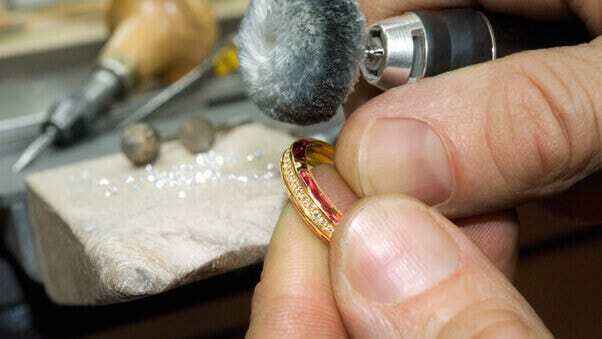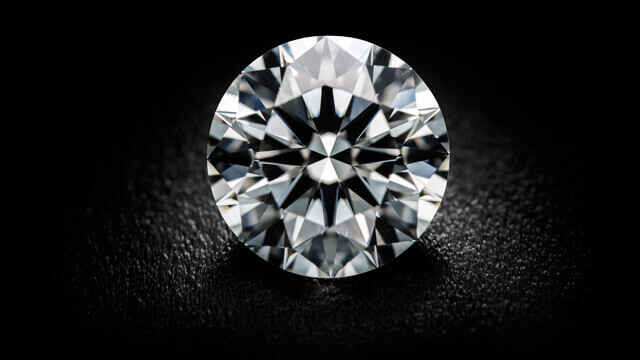The coveted stones are only formed under extreme conditions in the earth's interior
Igneous rock: This is the formation of a gemstone from liquid magma. The place of cooling is decisive for the type of stone formed. If the gemstone is formed underground in magma, it is called a plutonite, if it is formed during a volcanic eruption, it is called a volcanite and if it is formed in underground veins, it is a gangue. Gemstones formed from igneous rocks include granite, obsidian and peridotite.
Sedimentary rock: This rock is formed by the deposition of sediments or the process of weathering. Various factors, such as wind and weather, water and the acids it contains, biological organisms, erosion and carbonization, cause the rock to weather. For example, jasper, onyx and marble are formed from sedimentary rock. Azurite, malachite, various opals and turquoise are also formed through secondary mineral formation.
Metamorphic rock: A physical transformation process is initiated here due to high pressure or high temperature. This occurs, for example, through the contact of existing rock with magma, high pressure due to the overlapping of rock layers or the displacement of rock. This is how jade, emerald, garnet and lapis lazuli are formed, for example.
These three different types of rock form the basis for the creation of gemstones, but further processes are necessary to complete their formation. Due to various influences, the variety of stones that fascinates us so much is created. Even today, gemstones are still formed in the earth's interior - but this is a long-term process and it can take several million years for the stones to reach the earth's surface.
In ancient times, gemstones were generally only discovered when they were close to the earth's surface. Even today, a good dose of luck is still needed to discover them. Except for mechanization, the mining of coloured gemstones is still comparable to mining 1000 years ago. A place where gemstones are found is called a deposit; as soon as mining begins, it is called a mine.
The stones are most frequently extracted by alluvial mining: secondary deposits are formed by erosion of the parent rock. The gemstones are contained in sedimentary deposits and are mainly found in river beds, on the seabed and below the earth's surface. The extracted soil is sieved or washed to reveal the stones.
Different species occur in different regions. Deposits usually show an accumulation of a particular type of gemstone. Primary deposits are places where the stones were formed, while secondary deposits are places where they have been transported to. Gemstones are found on every continent, with certain continents having a particularly large occurrence of certain types.
OPAL: 95% of all opals are mined in Australia. There are large deposits in the so-called artesian basin, as it is a dried-up ocean that has left behind silica. The stone was formed from this over the course of time.
ACHAT: This stone was also formed from silica. In Germany, there was a large deposit in Idar-Oberstein, but these mines have already been exhausted. Nowadays, agate can be found in the Czech Republic, Australia, Uruguay and Brazil.
DIAMOND: Diamonds are mainly found in Australia and Africa. There are also deposits in Russia, China and North America.
JADE: Jade can be found in California, Myanmar, Canada and Japan. Jade has also been found in southern Germany.
ONYX: This stone belongs to the quartz family and is extremely rare. It is mainly found in Yemen, Brazil, Pakistan and Madagascar. Onyx is hard to find and is therefore often imitated.
AMBER: Germany is known for its golden-yellow amber, but it comes in different colors. There is a high occurrence of blue amber in the Dominican Republic, for example. It is also mined in Myanmar, Mexico, Japan and Poland.
SAPHIR: Until recently, India and Sri Lanka were the most important locations. Today it is Australia, the USA, Madagascar and Nigeria. Sapphires are extremely rare and are only found in a few areas.
Although gemstones are still being created, their quantity is not infinite. Wars are even fought over diamonds in particular, so it is especially important to always be aware of the origin of the stone and to question it morally.








